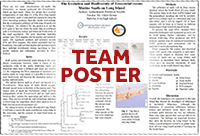
Team Info
- Program:
- Urban Barcode Research Project
- Year:
- 2024-25
- Research Topic:
- Wildlife
- Taxonomic Group Studied:
- Animals: Vertebrate
Project:
Factors affecting bird diversity in a Long Island saltmarsh
- Students:
- Karley Ko, Alessandra Solis Yi, Samia Hossein
- Institution:
- self,
- Mentors:
- Michael Friedman
Abstract:
Salt marshes are vital ecosystems that provide habitat for diverse plants and animal life, act as natural buffers against storms, and filter pollutants, all while adapting to challenging intertidal conditions. They are shaped by seasonal fluctuations in food resources, temperature, and vegetation, leading to different adaptations and behaviors between resident and migratory species, particularly in relation to energy reserves and migration timing. Climate change, particularly sea-level rise and altered temperature and precipitation patterns, poses significant threats to salt marsh ecosystems, impacting plant communities, nutrient cycling, and ultimately reducing the habitat and food resources available for birds, particularly those reliant on higher marsh vegetation. This study aims to analyze factors impacting bird species causing annual changes within salt marshes using E-Bird data, DNA barcoding, and GIS mapping to understand species adaptations, identify trends, and inform conserva

